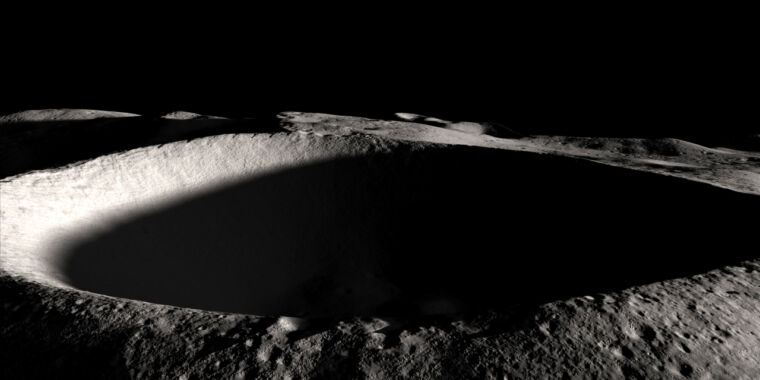For the first time ever, the United States is getting serious about fostering an economy on the Moon.
NASA, of course, is in the midst of developing the Artemis program to return humans to the Moon. As part of this initiative, NASA seeks to foster a lunar economy in which the space agency is not the sole customer.
That’s easier said than done. A whole host of conditions must be met for a lunar economy to thrive. There must be something there that can be sold, be it resources, a unique environment for scientific research, low-gravity manufacturing, tourism, or another source of value. Reliable transportation to the Moon must be available. And there needs to be a host of services, such as power and communications for machines and people on the lunar surface. So yeah, it’s a lot.
In recent months, a US Defense organization, the Defense Advanced Research Projects Agency, has stepped in to help. This is important because DARPA is a key supporter of emerging technologies with a track record of success. (DARPA, for example, bought the very first launch on SpaceX’s Falcon 1 rocket.) Last year, the defense agency announced it was initiating a study, LunA-10, to understand how best to facilitate a thriving lunar economy by 2035.
In December, DARPA announced that it was working with 14 different companies under LunA-10, including major space players such as Northrop Grumman and SpaceX, as well as non-space firms such as Nokia. These companies are assessing how services such as power and communications could be established on the Moon, and they’re due to provide a final report by June.
Things are moving faster than that, however. The DARPA program manager overseeing these activities, Major Michael “Orbit” Nayak, published a paper earlier this month based on learnings from these studies that only began a few months ago.
“Based on technical work and development conducted under the LunA-10 study, I have identified six hypotheses where, if revolutionary improvements in technology can be made, I assess that a direct acceleration to the fielding of a lunar economy is likely to occur,” Nayak said in the paper.
Seeking industrial innovation
Last Thursday, based on the ideas elucidated in Nayak’s paper, DARPA issued a “Request for Information” for technological capabilities that could scale up lunar exploration and commerce. This federal solicitation makes for interesting reading and suggests that Nayak and DARPA have thought things through.
Here’s a brief summary of each of the six areas of interest:
Centralized heating and cooling: The lunar day-night cycle means that much of the lunar surface is in darkness for 14 days and in light for 14 days. This creates thermal challenges, in that the surface gets very cold in the lunar night and rather warm during the lunar day. Much like an HVAC system provides heating and cooling services to various offices throughout a skyscraper, a thermal hub on the Moon could provide similar services to a variety of users so they would not have to bring them along. “In this new paradigm, users would bring only the minimal thermal equipment to the Moon, plug into a thermal hub, and pay for heat generated/rejected on a dollars-per-kilowatt basis—analogous to power utilities on Earth and a foundational enabler to the lunar economy,” the paper said.

Dr. Sarah Adams is a scientist and science communicator who makes complex topics accessible to all. Her articles explore breakthroughs in various scientific disciplines, from space exploration to cutting-edge research.







:max_bytes(150000):strip_icc():focal(731x269:733x271)/UmaSofia-Srivastava-050824-1da70bb518ed41c5a11fad920f5017b3.jpg)
